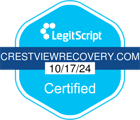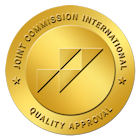Navigating the complexities of stress-related disorders can often feel overwhelming, especially for those seeking clarity and support. At Crestview Recovery in Oregon, we understand the critical importance of differentiating between Acute Stress Disorder (ASD) and Post-Traumatic Stress Disorder (PTSD). Both conditions, though similar in some symptoms, require distinct approaches to treatment and care.
This blog aims to shed light on the unique characteristics of each disorder, helping you or your loved ones make informed decisions about mental health care. At Crestview Recovery, our dedicated team is committed to providing comprehensive, compassionate treatment programs tailored to the needs of individuals facing these challenges, empowering them on their journey to healing and recovery.
Defining Acute Stress Disorder
Acute Stress Disorder is a mental health condition that can develop in response to experiencing or witnessing a traumatic event. Unlike PTSD, ASD occurs soon after the trauma, usually within three days to a month. The reactions can differ significantly from individual to individual, depending on their resilience, coping strategies, and the nature of the trauma itself. For instance, someone who has experienced a natural disaster may react differently than someone who has been involved in a violent incident, reflecting the complex interplay between personal history and the type of trauma faced.
The key feature of ASD is its temporary nature; symptoms often resolve within a few weeks. However, without proper intervention, some individuals may go on to develop PTSD, which has more long-lasting effects. Understanding the nuances of ASD is crucial for effective management and treatment. Early recognition and support can play a pivotal role in helping individuals navigate their emotional responses, fostering a path toward healing and resilience.
Symptoms of Acute Stress Disorder include a range of cognitive, emotional, and physical reactions:
- Intrusive memories and flashbacks of the traumatic event
- Severe anxiety or panic attacks
- Avoidance of reminders of the trauma
- Negative mood and feelings of hopelessness
- Increased arousal, such as difficulty sleeping or irritability
These symptoms can affect daily functioning, making it challenging for individuals to engage in routine activities or maintain social relationships. The persistence and intensity of these symptoms can vary, which underlines the need for tailored interventions. For example, someone experiencing heightened arousal may find it difficult to concentrate at work or school, while another might withdraw from social gatherings due to overwhelming feelings of anxiety. This variability emphasizes the importance of personalized treatment plans that address the unique experiences of each individual.
The causes of Acute Stress Disorder are generally linked to direct exposure to traumatic situations. Common risk factors include:
- History of previous trauma or stress-related disorders
- Lack of social support or resources
- Personality traits such as high levels of anxiety
- Severity of the trauma experienced
Understanding these risk factors can aid mental health professionals in identifying individuals who may be more vulnerable to developing ASD after a traumatic event, enabling targeted preventive measures. Additionally, factors such as cultural background and socioeconomic status can also influence how individuals process trauma and seek help, highlighting the need for culturally sensitive approaches to treatment and support.
Diagnosis of Acute Stress Disorder involves a comprehensive assessment by a mental health professional. They may use standardized questionnaires and interviews to understand the individual’s symptoms and trauma history. Early diagnosis is vital for effective treatment, and interventions often include:
- Cognitive Behavioral Therapy (CBT)
- Trauma-focused therapies
- Medication, such as antidepressants, in some cases
Early treatment can help mitigate severe symptoms and improve recovery chances, empowering individuals to regain their normal lives more swiftly. Furthermore, incorporating support groups can provide a sense of community and shared experience, which can be invaluable for those grappling with the aftermath of trauma. These groups not only facilitate emotional expression but also offer practical coping strategies, fostering a supportive environment for healing and growth.
Understanding Post-Traumatic Stress Disorder

Post-Traumatic Stress Disorder is a debilitating condition that can develop after an individual has been exposed to a traumatic event. Unlike Acute Stress Disorder, PTSD can emerge significantly later, sometimes even months or years after the trauma. The lingering effects can be profound, impacting various aspects of life. Those suffering from PTSD may find themselves grappling with feelings of isolation, as the emotional weight of their experiences can create a barrier between them and their loved ones. This sense of disconnection can exacerbate feelings of anxiety and depression, making it crucial for both the individual and their support network to understand the complexities of the disorder.
Individuals with PTSD often experience chronic symptoms that can severely disrupt their daily functioning. Early recognition of PTSD can lead to timely treatment, fostering a path toward recovery. It is essential for friends and family to be educated about the signs of PTSD, as their support can play a pivotal role in the healing process. Engaging in open conversations about mental health can help reduce stigma and encourage those affected to seek the help they need, ultimately paving the way for a more supportive environment.
PTSD symptoms are more persistent and can be grouped into four main categories:
- Intrusive thoughts and memories of the event
- Avoidance of reminders related to the trauma
- Negative alterations in mood and cognition
- Hyperarousal symptoms, such as heightened startle response and sleep disturbances
These symptoms can fluctuate in intensity and often interfere with everyday activities, relationships, and emotional well-being. Understanding these symptoms is essential for recognizing PTSD and seeking help. Additionally, many individuals may experience physical symptoms such as chronic pain, gastrointestinal issues, or fatigue, which can further complicate their recovery journey. The interplay between physical and emotional health underscores the importance of a holistic approach to treatment, addressing both mind and body to facilitate comprehensive healing.
Similar to ASD, PTSD arises from exposure to trauma. However, the potential for development into PTSD can be influenced by additional factors:
- Duration and intensity of trauma exposure
- Personal and family history of mental health issues
- Pre-existing coping mechanisms
- Social support available following the event
Recognizing these risk factors can provide valuable insight for both individuals and professionals in anticipating the potential for PTSD following traumatic experiences. Moreover, cultural background and individual personality traits can also play a significant role in how one processes trauma. For instance, those with a strong sense of community may find solace in shared experiences, while others may feel more isolated, highlighting the need for tailored support systems that cater to diverse backgrounds and coping styles.
Diagnosing PTSD involves a thorough evaluation where mental health professionals assess an individual’s experiences, symptoms, and their impact on daily life. Treatment options are comprehensive and often include:
- Prolonged Exposure Therapy
- Eye Movement Desensitization and Reprocessing (EMDR)
- Medication, including antianxiety medications and SSRIs
Effective intervention strategies can greatly improve symptoms and help individuals reclaim control over their lives. Additionally, incorporating lifestyle changes such as regular exercise, mindfulness practices, and a balanced diet can enhance the effectiveness of traditional treatments. Support groups and community resources can also provide a sense of belonging and understanding, allowing individuals to share their experiences and learn from others who have faced similar challenges. These complementary approaches can create a robust framework for recovery, empowering individuals to navigate their healing journey with resilience and hope.
Comparing Acute Stress Disorder and PTSD
While both Acute Stress Disorder and PTSD share similarities in terms of their traumatic origins, there are crucial differences to consider.
Similarities Between Acute Stress Disorder and PTSD
Both disorders arise from traumatic events and involve overlapping symptoms such as anxiety, intrusive thoughts, and avoidance behavior. Additionally, individuals with either disorder may struggle with emotional regulation, making it difficult to engage fully in daily life.
Both conditions necessitate professional support and can benefit from therapeutic interventions tailored to the needs of individuals, highlighting the importance of early assessment and care in both cases.
Key Differences Between Acute Stress Disorder and PTSD
Despite their similarities, the primary differences lie in their duration and time of onset. Acute Stress Disorder typically occurs shortly after the trauma and lasts no longer than a month. In contrast, PTSD can develop long after the event and persist for months or even years. Moreover, PTSD often requires more intensive therapeutic approaches and may involve complex treatment strategies.
Understanding these distinctions is essential for appropriate diagnosis and treatment, helping individuals receive the necessary support tailored to their specific experiences.
The Impact of Acute Stress Disorder and PTSD on Daily Life
Both Acute Stress Disorder and PTSD can have a profound impact on an individual’s daily life, affecting relationships, work, and overall well-being. Recognizing the emotional and social ramifications is crucial for both individuals living with these disorders and their loved ones.
Effects on Personal Relationships
Both ASD and PTSD can strain personal relationships. Individuals may withdraw from social interactions or struggle to communicate effectively about their feelings and experiences. This withdrawal can lead to misunderstandings, increased isolation, and frustration for both the individual and their loved ones. Additionally, emotional dysregulation can escalate conflicts in relationships, creating a cycle of distancing.
Impact on Work and Productivity
PTSD and Acute Stress Disorder can significantly impact one’s professional life. Symptoms like concentration difficulties, fatigue, and mood disturbances can hinder job performance and productivity. Furthermore, the fear of discussing their difficulties with employers may lead individuals to avoid seeking necessary accommodations or support at work.
Recognizing these impacts early on can facilitate the development of coping strategies and interventions, helping individuals maintain their professional roles while managing their mental health.
Coping Strategies and Support for Acute Stress Disorder and PTSD
Management and recovery from both Acute Stress Disorder and PTSD often involve a combination of self-care strategies and professional help. Individuals can adopt several coping mechanisms to address symptoms effectively.
Practicing self-care is crucial for individuals facing either disorder. Effective self-care techniques may include:
- Engagement in regular physical activity
- Mindfulness and relaxation practices
- Establishing healthy sleep routines
- Maintaining a balanced diet
These practices can help alleviate some of the emotional burden associated with trauma, providing individuals with healthier coping mechanisms.
While self-care is important, professional help is often essential for meaningful recovery. Psychologists, psychiatrists, and therapists can provide tailored therapeutic interventions and medication management based on individual needs. Early intervention can significantly improve outcomes for both ASD and PTSD.
Support groups and community resources can also play a vital role in recovery. Connecting with others who have shared similar experiences can foster a sense of understanding and community. Many local and online organizations offer support groups specifically for individuals dealing with trauma-related disorders. These resources can be crucial in providing encouragement and collective coping strategies.
To Learn More, Contact Crestview Recovery Today!

Understanding the nuances between Acute Stress Disorder (ASD) and Post-Traumatic Stress Disorder (PTSD) is vital for effective treatment and recovery. While both disorders may arise from traumatic events, they differ in duration, onset, and symptom intensity. Early diagnosis and customized treatment plans are essential for managing these conditions and fostering long-term well-being.
At Crestview Recovery in Oregon, we pride ourselves on our expertise and unwavering commitment to supporting individuals on their path to recovery. Our compassionate team is here to provide the comprehensive care needed to overcome the challenges of ASD and PTSD. If you or someone you know is experiencing symptoms, don’t hesitate to seek professional help. Remember, reaching out is the first courageous step toward healing and reclaiming control over your mental health.
https://www.ncbi.nlm.nih.gov/books/NBK560815/
https://www.ptsd.va.gov/professional/treat/essentials/acute_stress_disorder.asp
https://www.ptsd.va.gov/understand/related/acute_stress.asp
https://pubmed.ncbi.nlm.nih.gov/32809650/
https://www.ncbi.nlm.nih.gov/pmc/articles/PMC9059423/
https://www.nimh.nih.gov/health/publications/post-traumatic-stress-disorder-ptsd
































